Chicken is one of the most versatile meats that is both accessible and affordable. While cooking chicken is easy and does not require a lot of preparation, its soft meat could become rubbery in several circumstances.

Rubbery chicken happens when you undercook or overcook the meat or if it lacks moisture. You might also get rubbery chicken if you buy tough meat from a grown broiler chicken, which makes the meat tough and chewy.
There are many ways to avoid this, and we will talk about each one in this article.
Table of Contents
What Does Rubbery Chicken Mean?
Rubbery chicken refers to chicken that has gone tough and chewy. Several factors cause this, including how you cook the chicken and the type of chicken meat you have.
While rubbery chicken still has the nutrients you would get from regular chicken, the protein in the chicken may denature when overcooked. Moreover, undercooked or raw chicken could also cause different health issues.
Why Does Chicken Become Rubbery?
Overcooking
Overcooking chicken can make it rubbery since heat denatures protein. When proteins are denatured, they unravel, which makes them stick together and make the texture harder.
This is why overcooked chicken is often rubbery, and it is also why your egg whites become rubbery when overcooked.
The denaturation that occurs when cooking chicken also depends on the temperature. If you cook the chicken at a higher temperature for a longer period, more denaturation will occur, resulting in a tougher and more rubbery texture.
Undercooking
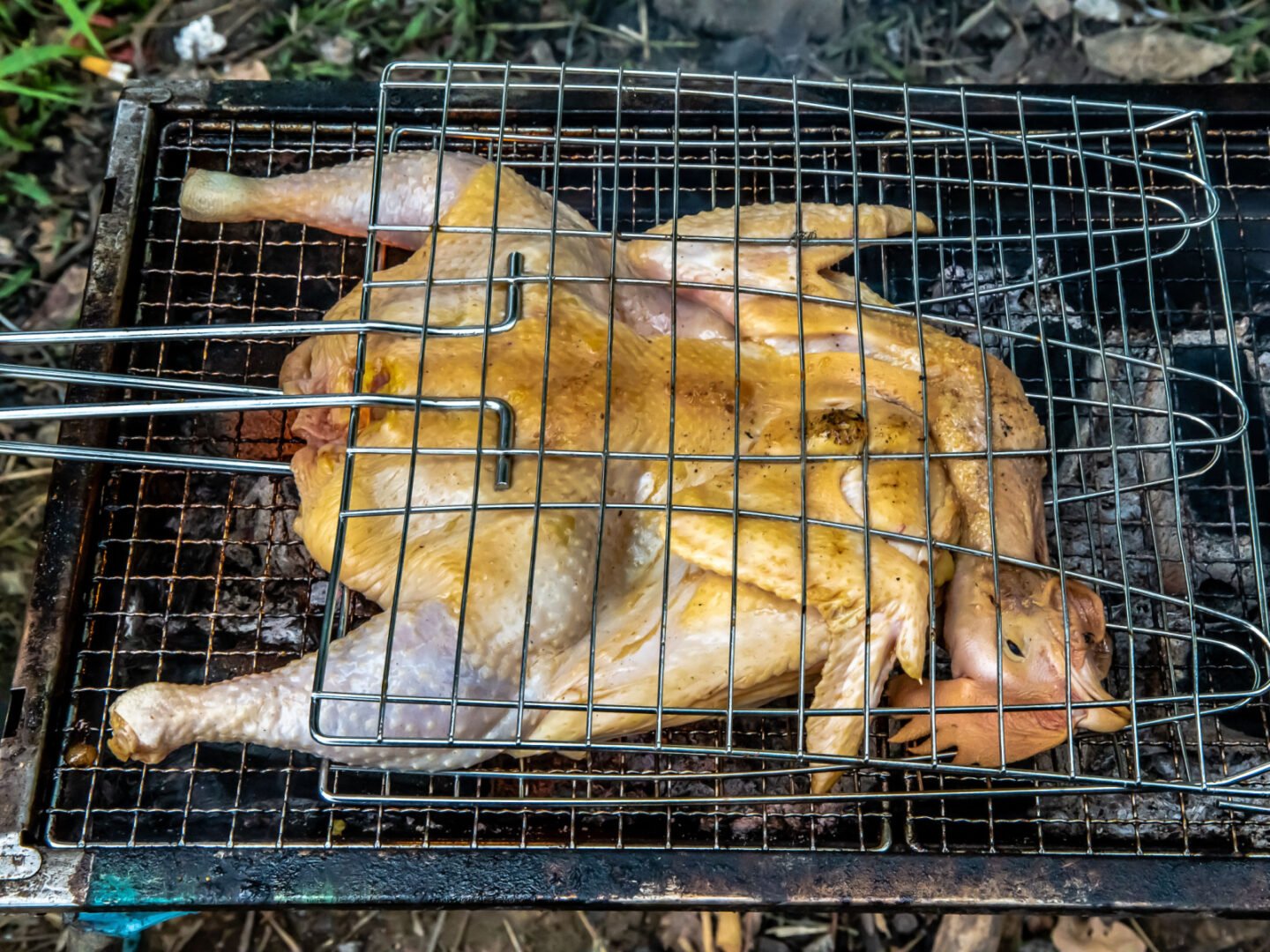
Undercooking chicken can make it rubbery because protein needs more time and heat to break down and become tender. Proteins remain in their original shape when you don't cook them enough and don't become softer.
Not only is undercooked chicken bad for the taste, but it also brings potential health risks as meat is a common source of food poisoning.
To avoid this, you should always cook the chicken to an internal temperature of 165 degrees Fahrenheit. This is the temperature at which proteins break down and the chicken becomes tender.
If you're using a thermometer, put it in the chicken's thickest part to check the temperature and make sure it cooks well.
Lack of Moisture
Water is essential when cooking chicken, as it helps dissolve the fats and soften the chicken meat. The lack of moisture may result in tough, rubbery chicken that needs more taste.
You can easily add moisture to your chicken by cooking it with water, such as when steaming, braising, broiling, or stewing. If you’re using a dry heat method in cooking, make sure to marinate or brine the meat or apply chicken broth from time to time.
Using Woody Chicken Breast
Woody chicken, or woody breast, is a condition where the chicken muscle is firm, pale, and lacks texture.
Most broiler chickens that have woody breasts are older and have bigger bodies. More muscle mass means tougher meat, which becomes rubbery in texture when cooked.
To avoid this, always buy from a trusted meat supplier and avoid buying excessively large portions of chicken meat.
How To Prevent Rubbery Chicken
When Boiling
You must remember three things when making boiled chicken: temperature, cooking time, and pot size.
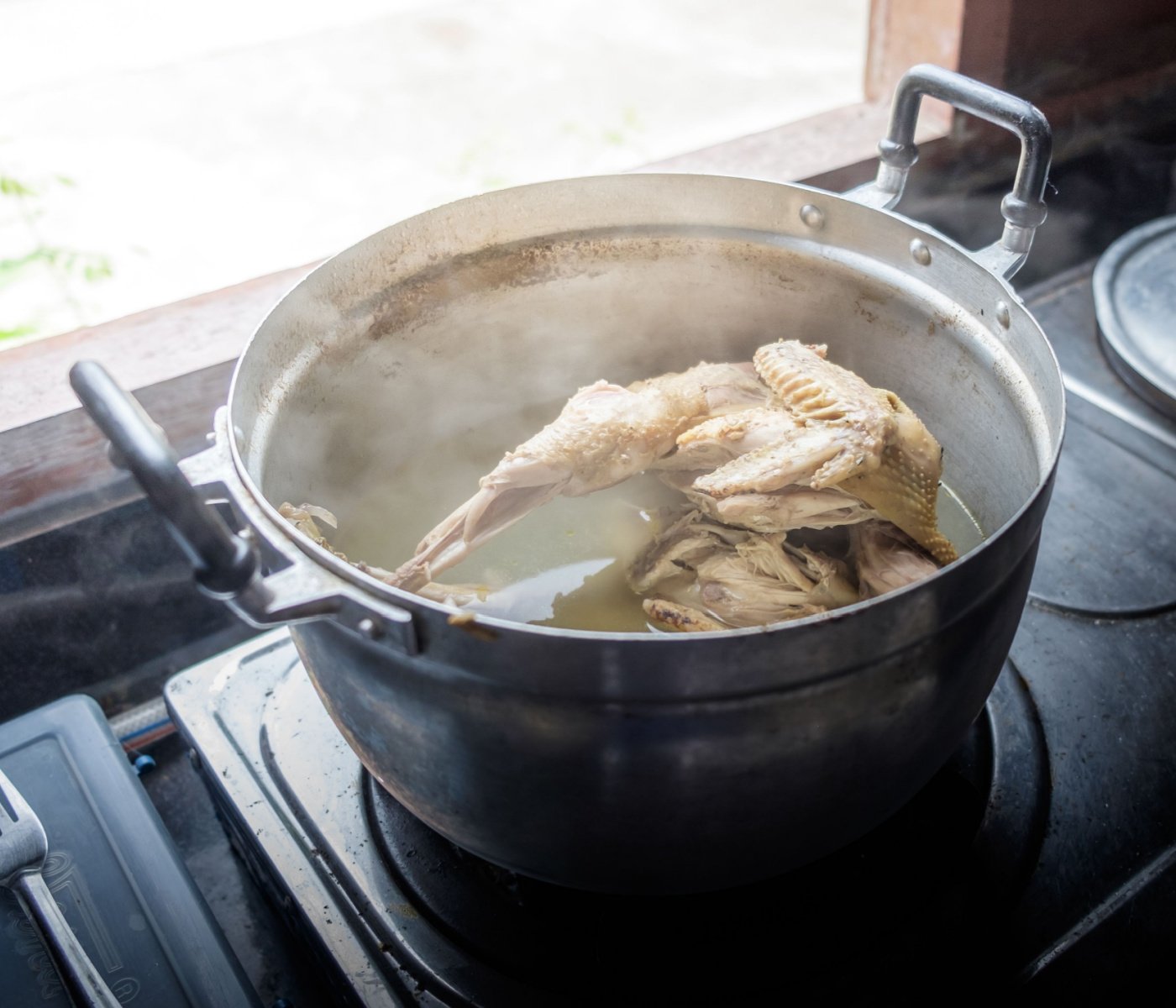
The most important thing to remember is to check the internal temperature of the chicken with a meat thermometer. The internal temperature should reach 165 degrees Fahrenheit before the chicken is considered cooked.
Once the meat reaches the desired temperature, you can leave it to cook for a few more minutes, but make sure not to leave it for longer to avoid overcooking it.
Additionally, it is best to use a large pot that can cover the chicken piece entirely, especially when cooking a large part. This will help to ensure that the chicken cooks evenly.
When Frying
The most crucial thing to consider when frying chicken is preheating the pan before adding the meat. Preheating the pan will allow the meat to cook faster with evenly distributed heat.
Another tip is to separate bigger cuts from smaller cuts and fry them separately. This way, you will have an easier time gauging if you have cooked chicken.
I also suggest keeping the pan’s lid on until the chicken is cooked. This will keep the heat inside the pan and help the meat cook faster without overcooking.
When Baking
Just remember to preheat the oven and set the correct temperature and timer when making baked chicken.
Most of the time, the chicken gets undercooked when you don’t preheat the oven. Moreover, forgetting to preheat the oven leads to unevenly cooked meat. On the other hand, failing to set the timer will lead to overcooked chicken.
Baking also tends to dry up the meat, so be sure to marinate the meat before baking to provide moisture.
When Grilling
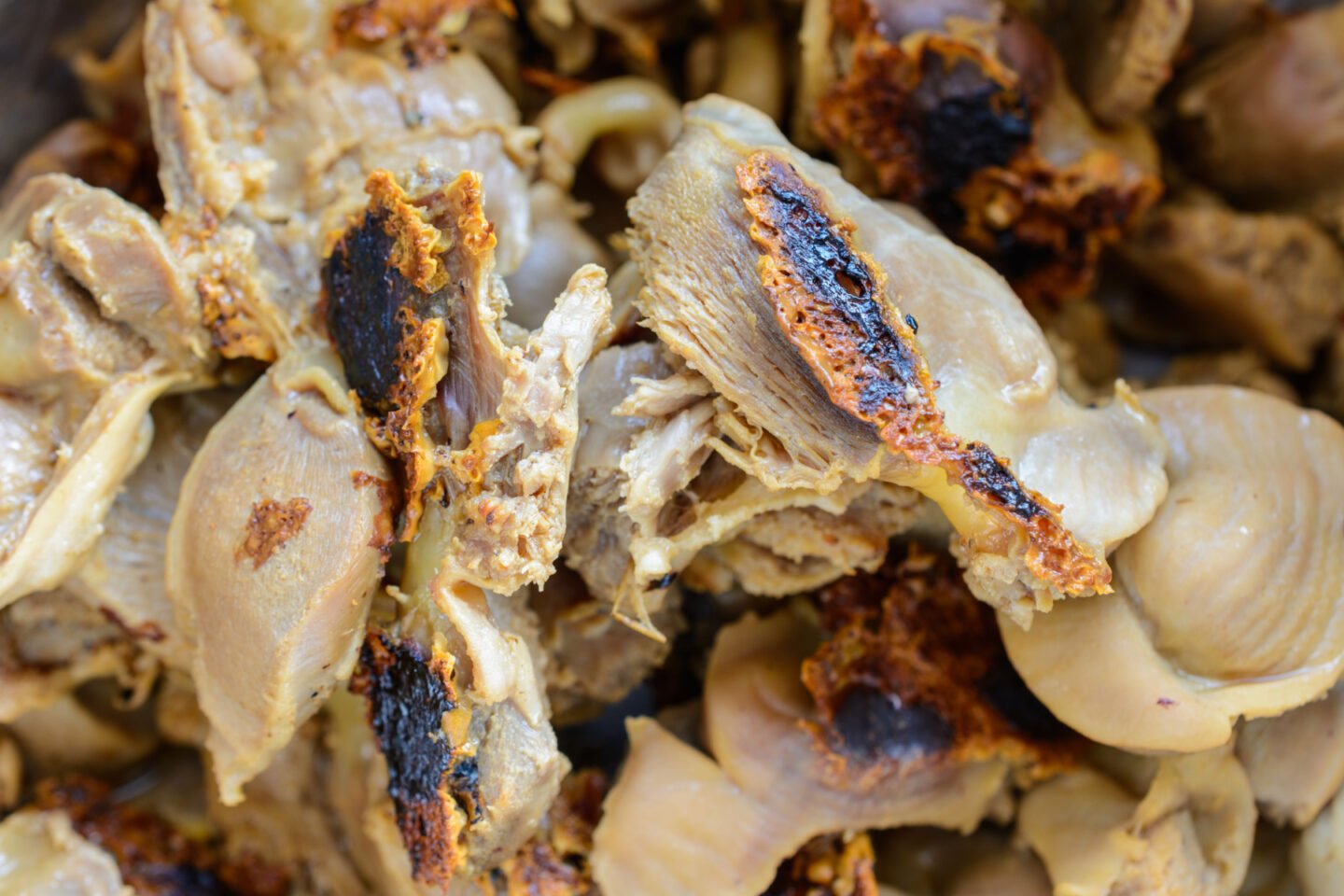
When grilling, the key to avoiding rubbery or chewy chicken is to ensure the chicken is cooked through but not overcooked. To do this, properly thaw the chicken (especially frozen chicken breast) before grilling to ensure that all the parts will cook evenly.
Make sure the grill is at the right temperature before adding the chicken, and keep an eye on it to make sure the temperature stays the same.
Another way to avoid dry, rubbery chicken when grilling is to avoid direct heat. Place the chicken on indirect heat and cook it at a lower temperature for longer to allow the meat to cook evenly.
Lastly, don’t forget to flip the meat from time to time to avoid overcooking one side.
Cooking Ways That Do Not Make Chicken Rubbery
Steaming
One of the easiest ways to keep chicken from getting rubbery is to steam it. Aside from being one of the easiest ways to cook chicken, steaming is notably healthier than other options.
With steaming, you can make sure that the heat goes all the way through the meat, so it can cook at the same time. Steaming also results in more tender and juicy chicken.
However, the only catch is that steaming means less flavorful meat. To enhance flavor, marinate the chicken for a few hours and wrap it in aluminum foil.
Simmering
Simmering is a great way to cook chicken meat, as it allows it to cook slowly and evenly. Simmering is a gentle way to cook at a lower temperature than boiling. This keeps the chicken from getting too dry or overcooked.
Simmering chicken helps to retain moisture as the chicken is cooked in a liquid such as chicken broth or water, keeping the chicken juicy and tender. Simmering also helps to bring out the flavor of the chicken and any seasonings and herbs used.
Stewing
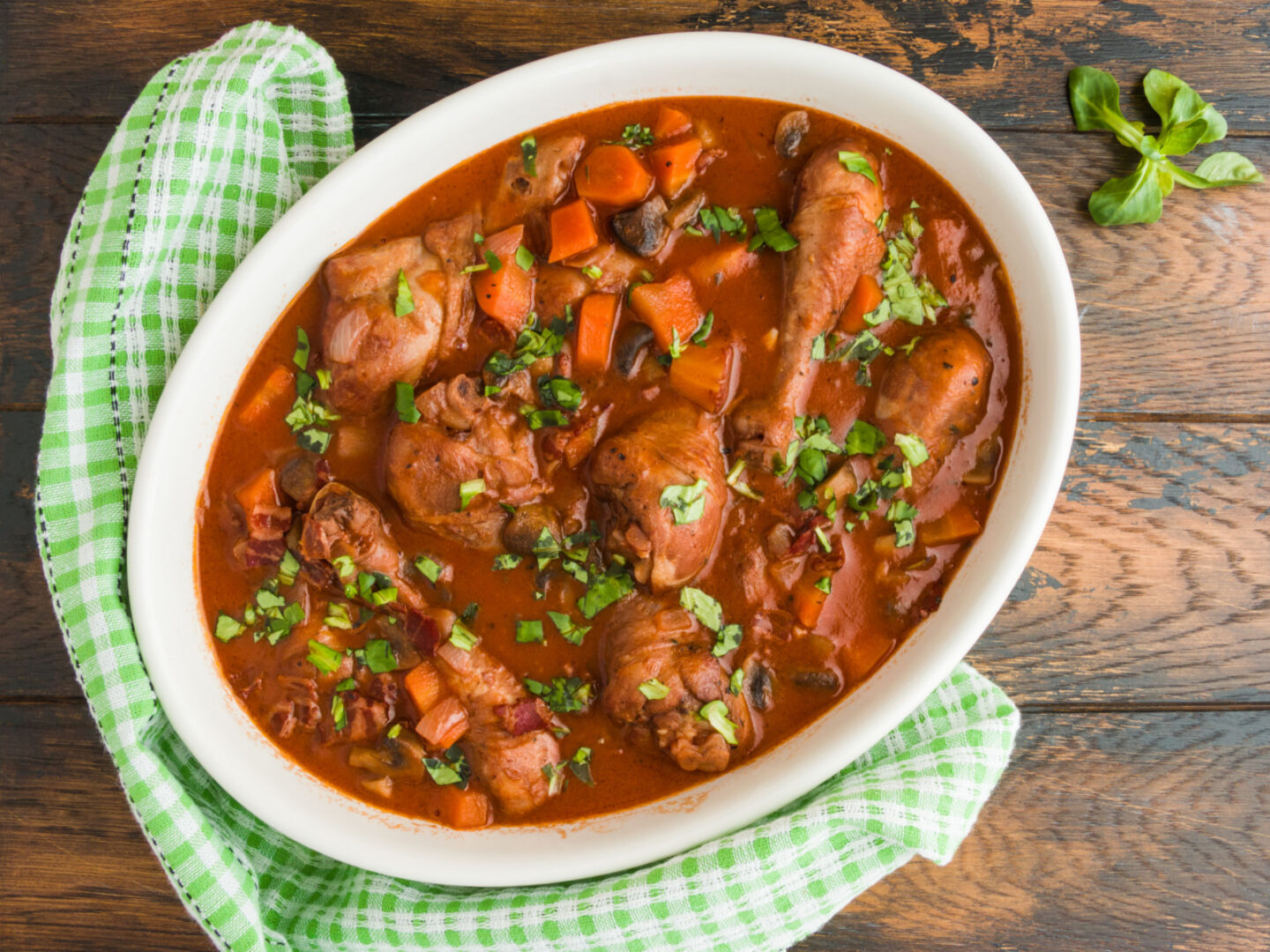
Like simmering, stewing is also an excellent method to prevent making chicken rubbery. The only difference between simmering and stewing is that stewing requires much less liquid to reduce into a sauce.
Sous Vide
Sous-vide chicken is the way to go if you want a very tender and juicy chicken. The sous vide technique uses vacuum-sealed plastic to keep all the flavors in the meat while cooking it thoroughly in a slow cooker.
Another benefit of sous vide is that it’s a hands-off cooking method. You don’t have to worry about constantly monitoring the temperature or stirring the chicken, so it’s an excellent option for busy cooks.
Can You Fix Rubbery Chicken?
Fortunately, there are some remedies you can try if your chicken turns tough and chewy. First, check if it is undercooked. It’s easier to remedy the undercooked chicken piece; just cook it for a few more minutes and use a thermometer to check the internal temperature.
On the other hand, if your cooked chicken turns rubbery, it may be due to overcooking or a lack of moisture. A way to fix it is by adding chicken stock or water to the meat and letting it simmer for a few minutes until it softens.
Is Rubbery Chicken Safe to Eat?
Yes, eating rubbery chicken is generally safe, especially when the cause of the toughness is overcooking or a lack of moisture. However, I don’t suggest eating undercooked chicken to avoid bacterial infections.
Why Does Fried Chicken Become Rubbery?
The first reason why fried chicken becomes rubbery is overcooking. If you’re deep frying a bigger chicken piece, such as chicken breast meat (skinless chicken breast or boneless chicken breast), a chicken thigh, chicken wings, chicken legs, or a drumstick, make sure to take the meat out after 15 minutes of frying.
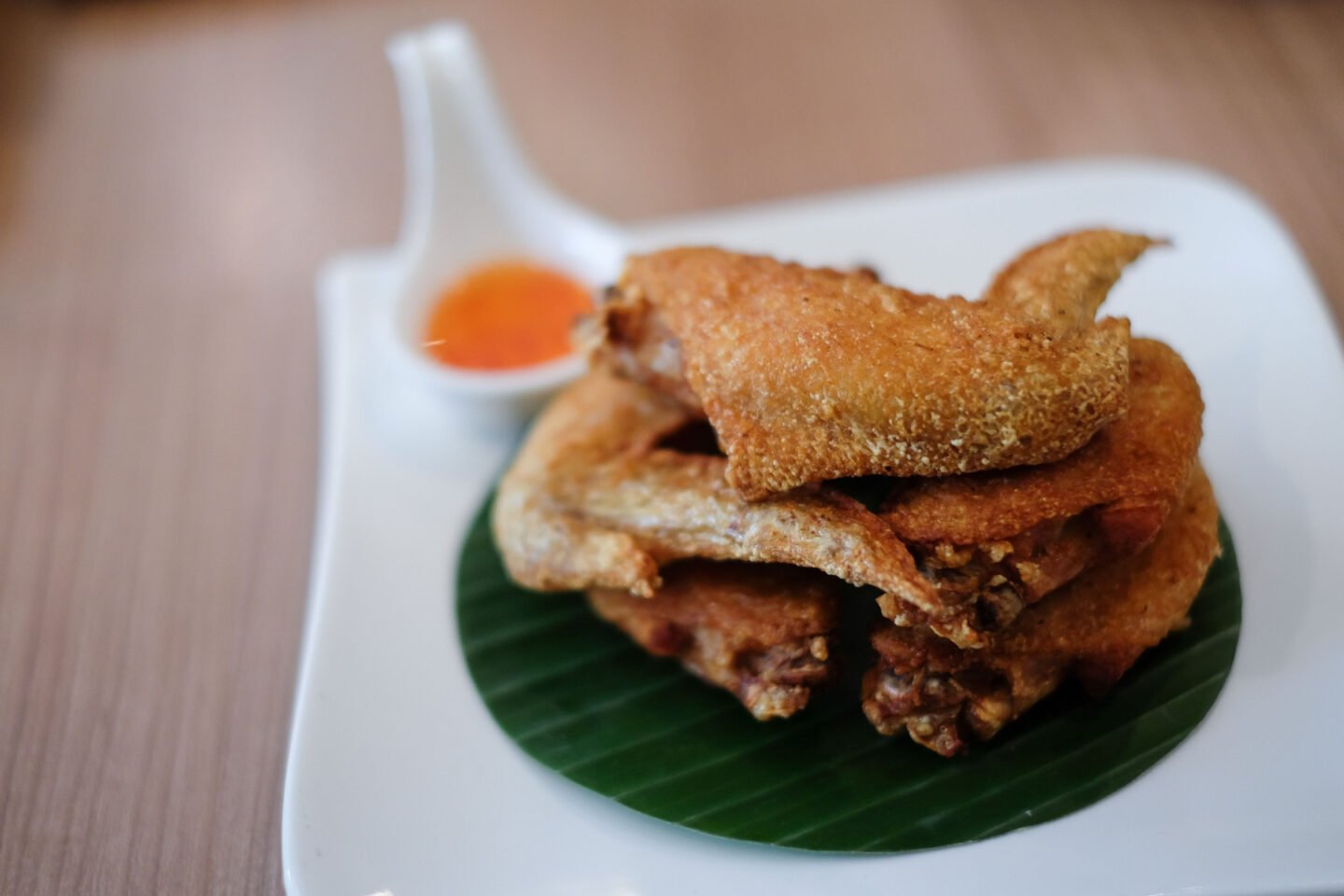
On the other hand, if you’re making crispy skin (chicken skin), the frying time should not exceed five minutes, or you'll end up with rubbery skin.
Another reason why fried chicken becomes rubbery is the need for more moisture. Once you store fried chicken in the open air, it dehydrates and becomes rubbery. To avoid this, always store chicken in an airtight container.
However, you should only store cooked chicken in a container after it has cooled down. Keeping cooked chicken in a container while it’s hot will produce moisture that will soften the chicken.
Related Questions
Chicken parts with more muscle, such as chicken thighs, are more prone to becoming rubbery. Also, the meat from older broiler chickens is tougher, so buy from a reputable seller of organic chicken.
Dry cooking, including using an air fryer, often causes rubbery meat due to a lack of moisture. The air fryer uses high heat when cooking, resulting in the evaporation of moisture from your chicken.
While crispy chicken contains nutrients, it also has high amounts of fat, calories, and sodium that are not good for health.

Leave a Reply